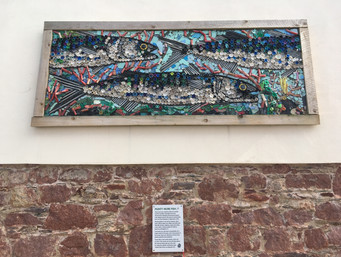Plastic food, anyone?
- Julia Goodfellow-Smith

- Jan 8, 2021
- 2 min read
Updated: Feb 26, 2021
All around the South West Coast Path, I saw signs of the plastic pollution in our seas and on our beaches.
Plastic lasts for hundreds of years in the sea, gradually breaking down into smaller and smaller pieces. It’s not just an eyesore – to some marine life and seabirds, it resembles food. Plastic bags look like jellyfish and nurdles look like fish eggs.

The tiny fibres that are washed out of our synthetic clothing, hundreds of thousands in each wash, look like phytoplankton. Plastic is not broken down by digestive systems, so some animals and birds are dying of starvation with stomachs full of plastic.
In 2019, an autopsy on a dead whale revealed that it died due to ‘gastric shock’. It had 88lb / 40kg of plastic in its stomach. Check out the full story here.
There are many shocking stories like this, but perhaps of even greater concern is the effect that plastic seems to have on seabirds when ingested on a smaller scale. In 2015, 90% of seabirds were found to have ingested plastic and now we know what impact just a small amount has – an increase in their cholesterol, impaired kidney function and impaired growth (source).
This is not just bad news for seabirds, it may be bad news for us too. A World Health Organization report from 2019 advises that “Microplastics are ubiquitous in the environment and have been detected in marine water, wastewater, fresh water, food, air and drinking-water, both bottled and tap water.” The same report concludes that the risk to humans of microplastics in drinking water cannot yet be determined, largely because so little research has been done in this area.
Which begs the question: Do we want to take the risk, or take a precautionary approach and reduce the amount of plastic waste produced now?


















Every walk with Julia includes a plastic rubbish pick up. On a beach in Wales we had so much rubbish we tied boxes together and dragged them off the beach.